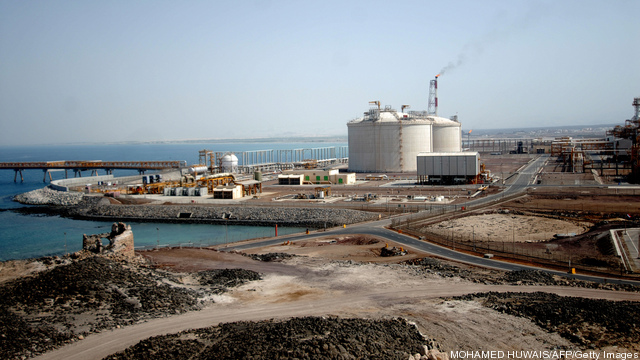
Transformation of the ageing electric power grid in the US is inevitable and urgent; most people in the energy industry can agree on that.
But exactly at what pace and how the future electric system will look are hotly debated. Keep reading →

Transformation of the ageing electric power grid in the US is inevitable and urgent; most people in the energy industry can agree on that.
But exactly at what pace and how the future electric system will look are hotly debated. Keep reading →

Recent evidence suggests companies that score highly on sustainability metrics tend to be well run and have solid business models – 655 institutional investors representing $78 trillion in assets appear to agree.
The 655 investors are signatories to the Carbon Disclosure Project, which is a global greenhouse gas emission reporting initiative that incentives companies, governments and cities to voluntarily disclose data pertaining to key sustainability metrics. Keep reading →

During the month of August, the Australian uranium mining company Paladin Energy released some news that sent a much-welcome shock wave through the industry: Not only had it entered into an agreement to supply about 14 million pounds of uranium to a major utility, but it would be receiving $200 million as a pre-payment-even though the actual delivery of uranium would not begin until the year 2019.
The confidence in the marketplace reflected by the Paladin deal represents major news for an industry whose product is thought by several analysts to be significantly undervalued. In the wake of the Paladin announcement, for example, both Credit Suisse and RBC agreed that uranium prices could potentially rise as high as $80 to $90 per pound in a healthy market-up from $48 per pound as of mid-September 2012. Keep reading →
 Duke Energy President and CEO Jim Rogers (3rd L) testifies with (L-R) Alcoa Inc. Global Issues Director Meg McDonald, Natural Resources Defense Council President Frances Beinecke and ConocoPhillips Senior Vice President Red Cavaney before the House Energy and Commerce Committee on Capitol Hill April 22, 2009 in Washington, DC.
Duke Energy President and CEO Jim Rogers (3rd L) testifies with (L-R) Alcoa Inc. Global Issues Director Meg McDonald, Natural Resources Defense Council President Frances Beinecke and ConocoPhillips Senior Vice President Red Cavaney before the House Energy and Commerce Committee on Capitol Hill April 22, 2009 in Washington, DC.
July 2 was not supposed to be an ordinary day for Bill Johnson, the former chief executive of Progress Energy. But it ended in an extraordinary way that even he hadn’t expected. Keep reading →

Companies are at the leading edge of wind globally, not least in the US. Starbucks recently sent a joint letter with 18 other US companies to Congress to request an extension of the Production Tax Credit which has helped grow installed capacity.
Ben & Jerry’s, Clif Bar, Johnson & Johnson, Levi Strauss & Co, The North Face, Sprint, Starbucks, Symantec, Timberland and Yahoo! are just a selection of household corporate names that understand the value of a sustainable wind industry to the consumer and the bottom line. Keep reading →

Section 1603 cash grants have been something of a regulatory moving feast. When introduced by the ARRA in 2009 as an alternative to the crisis-KO’ed production tax credit (PTC) and investment tax credit (ITC), investors responded to the promise of king-lier than ever cash with a certain amount of faith that regulators would heed the stimulus spirit as flesh was put on the 1603 bones. For the most part, the DoE, Treasury and IRS have rewarded this faith; key guidance (e.g. relating to eligibility, transferability, construction start dates, etc.) generally reflecting the interest of those regulators in a fluid/pragmatic public-private partnership.
Recently, that apparent spirit of cooperation took a surprising blow when the Office of Management and Budget (OMB) included Section 1603 grants on its list of budget items subject to a “mandatory” 7.6% sequestration. What this appears to mean (Akin Gump’s “Renewable Energy Treasury Grant Program Included in Fiscal Cliff Sequestration” notes the absence of any explicit knife-wielding methodology) is that unless sequestration is replaced or extended by year end, Section 1603 grants will be reduced by 7.6% across-the-board. One can imagine the frustration/anger of grant recipients that the key term of the deal (i.e. the size of the cash grant) would suddenly and unilaterally be changed; especially given that any grant slashed in 2013 would be in respect of projects commenced between 2009 and 2011 (and in most cases largely completed). Keep reading →

On the surface, LNG appears to represent a new opportunity where easy profits are for the taking. In reality, producing and delivering LNG is a difficult business, and that business will only get harder as time goes on.
Unlike natural gas, where prices are established regionally, LNG is becoming a global commodity. Market prices depend on global supplies and demand. It is expected supplies will remain constrained for the next three years. Keep reading →

Speakers representing a wide range of sectors, from academia to accounting, had similar views with regard to the importance of corporate social responsibility and renewable energy investments: These things matter now and will only become more important to shareholders and consumers in the future.
“In 5 to 10 years, it will be very difficult to sell products made from ‘black’ energy,” predicted Morten Albaek, Chief Marketing Officer for wind turbine manufacturer Vestas. Albaek was announcing the results of two new energy transparency studies being launched at the New York Bloomberg Tower on September 24th. The studies were released in Rio in August and London last week. Keep reading →

During this year’s presidential campaign, the renewable energy industry and the tax credits that support it have become a hot political topic.
Republican Presidential candidate Mitt Romney caused a ripple of anxiety in the US wind industry when he said he would not extend the Production Tax Credit that has helped grow the wind industry to 50GW of installed capacity. Keep reading →

During this year’s presidential campaign, the renewable energy industry and the tax credits that support it receives have become a hot political topic.
Renewable energy enjoys broad support in the US where people expect the government to support emerging clean power technologies and the 2012 Global Consumer Wind Study would make useful reading for both candidates. Keep reading →
